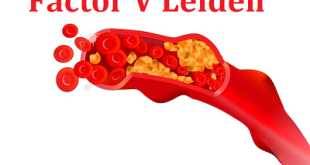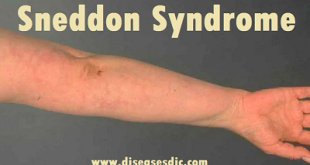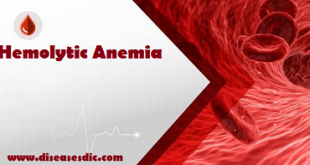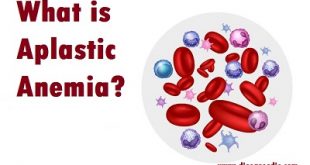Definition
Neutropenia is when a person has a low level of neutrophils. It is a type of white blood cell. All white blood cells help the body fight infection. Neutrophils fight infection by destroying harmful bacteria and fungi (yeast) that invade the body. Neutrophils are made in the bone marrow. Bone marrow is the spongy tissue found in larger bones such as the pelvis, vertebrae, and ribs.
Some level of neutropenia takes place in about half of people with cancer who are receiving chemotherapy. It is a common side effect in people with leukemia. If you have neutropenia, practice good personal hygiene to lower your risk of infection. This includes washing your hands regularly.
People who have neutropenia have a higher risk of getting serious infections. This is because they do not have enough neutrophils to kill organisms that cause infection. People with severe or long-lasting neutropenia are most likely to develop an infection.
Types of Neutropenia
Healthy adults have an absolute neutrophil count of between 1500 to 8000 cells per microliter of blood. Depending on the severity of the deficit of neutrophils in the blood, neutropenia may be mild, moderate or severe. A neutrophil count of between 1000 and 1500 cells per microliter of blood is treated as a mild case of neutropenia.
When the level drops to between 500 and 1000 cells, it is considered moderate neutropenia. A neutrophil count lower than 500 cells per microliter indicates severe neutropenia and carries a critically high risk of infectious complications.
Types include:
Cyclic Neutropenia– A type of neutropenia occurring every 21 days
Congenital Neutropenia– The most common, and could be inherited to the offspring
Idiopathic Neutropenia– Cause yet unknown
Isoimmune Neonatal Neutropenia– A type of neutropenia common to new-born babies
Depending on the nature of the mechanisms by means of which neutropenia manifests, this condition may be treated as either congenital or acquired.
Congenital neutropenia
These individuals are born with abnormally low levels of neutrophils in their blood because of having inherited genetic mutations responsible for neutropenia.
Acquired neutropenia
The absence of neutrophils may be attributed to severe infectious disease or medications. The patient may have undergone chemotherapy as a result of which neutropenia might manifest. Generally, the cause is one that can occur over the course of a lifetime and which is not associated with heredity. It may also be characterized as either acute or chronic. These are further divided into a number of subtypes.
Chronic neutropenia
If the level of neutrophils in the blood remains abnormally low for as long as two months at a stretch, the patient is said to be suffering from chronic neutropenia. This condition may eventually resolve itself or persist in the long term. This might be as a result of congenital defects or autoimmune disorders. Sometimes a cyclical pattern is seen where neutrophil numbers dip and rise in an alternating manner. Onset usually occurs in childhood.
Acute neutropenia
This occurs as a result of any conditions that temporarily boost consumption of neutrophils or temporarily reduce the ability of the bone marrow to produce neutrophils. Chemotherapy is a common cause of acute neutropenia.
Risk factors
What increases the risk of neutropenia?
- Family history or inherited genes
- Medical treatments, such as chemotherapy or radiation therapy
- Certain medicines, such as penicillin or aspirin
- Infections, such as hepatitis A or B, RSV, influenza A or B, cytomegalovirus, Epstein-Barr virus, and HIV
- Autoimmune disorders, including hyperthyroidism, rheumatoid arthritis, and lupus
- Bone marrow diseases, including aplastic anemia and acute leukemia
- Lack of certain vitamins and minerals, such as B12, folate, and copper
Neutropenia causes
It may be caused by different factors as outlined below:
- Infections – HIV, Malaria, Hepatitis A, B, C, sepsis, typhoid
- Blood disorders – Chronic lymphocytic leukemia, acute myeloid leukemia, malignant lymphoma, Diamond-Blackfan syndrome, cyclic neutropenia, Kostmann’s syndrome
- Immune disorders – rheumatoid arthritis
- Drugs – Clozapine, rituximab, antithyroid medications, sulfasalazine
- Chemotherapy agents for cancer treatment eg alkylating agents and antimetabolites
- Bone marrow diseases eg aplastic anemia, cancer infiltration
- Deficiencies in diet – malnutrition, vitamin B12, copper
- Preeclampsia in mother – (congenital neutropenia)
- Maternal antibodies against neutrophils of the infant (congenital neutropenia)
- Neutropenia caused by an enlarged spleen
- Cancer (e.g. large granular lymphocyte (LGL) leukemia)
Symptoms
Signs and symptoms of infection to look for:
- Check your temperature twice a day or if you feel feverish. If your temperature is 100.4°F (38.0°C)
- or higher, call your provider right away
- Do not take acetaminophen (Tylenol) or aspirin to reduce the fever without talking to your provider first
- Shaking chills
- Cough, sore throat, nasal congestion, or shortness of breath
- Burning with urination or new lower back pain
- Blood in urine
- Diarrhea (worsening) or change in the odor of your stool
- Rash, redness or swelling of the skin
- Redness, soreness around central line catheter, feeding tube or a wound
- Soreness or swelling in your mouth or throat, ulcers or white patches in your mouth, or a change in the color of your gums
Complications
- The primary complication arising from this condition is heightened susceptibility towards infectious diseases.
- Bacterial, fungal and viral infections occur with increased frequency in those with neutrophil deficiency.
- An interesting feature of neutropenia-related infection is the presence of fever but an absence of inflammatory response. Inflammation is absent because neutrophils are depleted. This is known as febrile neutropenia.
- Pneumonia is a common complication but this too does not present with its usual severity of respiratory symptoms. Critical complications include respiratory failure, kidney failure, and death.
Diagnosis and test
Your healthcare provider will ask about your symptoms and examine you. Tell him or her about the medicines or supplements you take and any health conditions you may have. You may need any of the following tests:
Blood tests will show the level of white blood cells in your body. This will tell healthcare providers if you have an infection and if your neutropenia is moderate or severe.
Urine tests will show if you have an infection of your bladder or kidneys.
A CT may show an infection or other problems causing your symptoms. You may be given contrast liquid to help the infection or other problem show up better in the pictures. Tell the healthcare provider if you have ever had an allergic reaction to contrast liquid.
Treatment and medications
Treatment is based upon the underlying cause, severity, and the presence of associated infections or symptoms as well as the overall health status of the patient. Obviously, treatment must also be directed toward any underlying disease process. Treatments that directly address neutropenia may include (note that all of these treatments may not be appropriate in a given setting):
- Antibiotic and/or antifungal medications to help fight infections;
- Administration of white blood cells growth factors (such as recombinant granulocyte colony-stimulating factor (G-CSF, filgrastim (Neupogen); sargramostim (Leukine);
- A granulocyte-macrophage colony-stimulating factor (GM-CSF), or pegfilgrastim (Neulasta), a long-acting form of filgrastim) in some cases of severe neutropenia;
- Granulocyte transfusions
- Corcorticosteroid therapy or intravenous immune globulin for some cases of immune-mediated neutropenia.
Preventive measures may also be implemented in neutropenic patients to limit the risk of infections. These measures might include strict attention to hand washing, use of private rooms, or in some cases, use of gloves, gowns, and/or face masks by caregivers.
Neutropenia prevention
Your child’s doctor will suggest ways to help avoid infection, such as:
- Frequent hand washing
- Avoiding crowds and limiting contact with sick people
- Getting all recommended vaccines
- Good care of teeth and regular dental check-ups to avoid problems with gums
Fever (over 38.50 C or 101.30 F) is a sign of infection and needs attention right away. We will give you guidelines about what to do if your child gets a fever.
They may need antibiotics to help fight infections caused by bacteria. Usually, antibiotics are given into your child’s vein using a tube, called an IV (intravenous) line.
A child who gets an infection may need to stay in the hospital until we are sure their infection is controlled.
 Diseases Treatments Dictionary This is complete solution to read all diseases treatments Which covers Prevention, Causes, Symptoms, Medical Terms, Drugs, Prescription, Natural Remedies with cures and Treatments. Most of the common diseases were listed in names, split with categories.
Diseases Treatments Dictionary This is complete solution to read all diseases treatments Which covers Prevention, Causes, Symptoms, Medical Terms, Drugs, Prescription, Natural Remedies with cures and Treatments. Most of the common diseases were listed in names, split with categories.








If treatment options are also added , this app can be a helpful tool for house officer and doctors working in Rural Africa where health care is considered a luxury. Higher school students can be helpful using this app.
why is acetaminophen contraindicated to high grade fever due to neutropenia?
Acetaminophen (APAP) is considered a non-opioid analgesic and antipyretic agent used to treat pain and fever. for mild to moderate pain and in combination with an opioid analgesic for severe pain